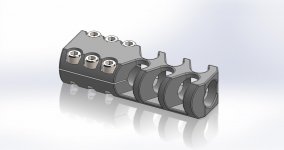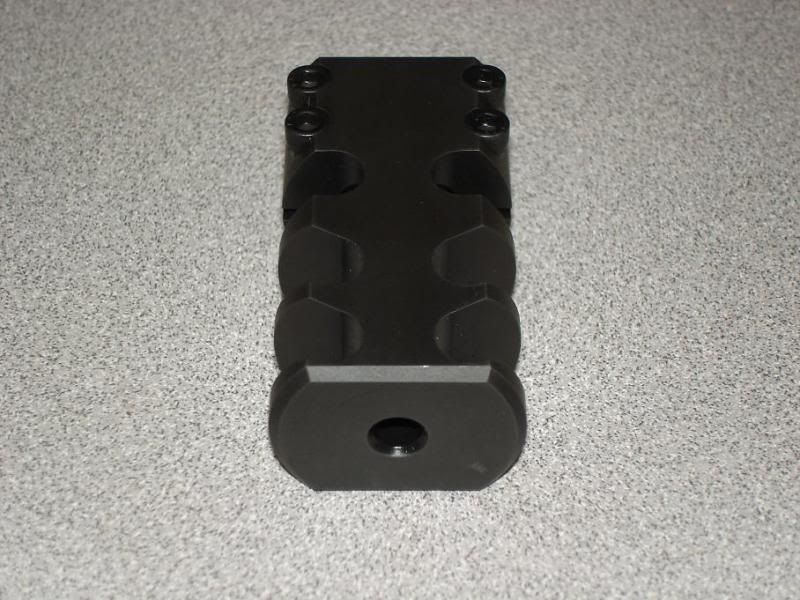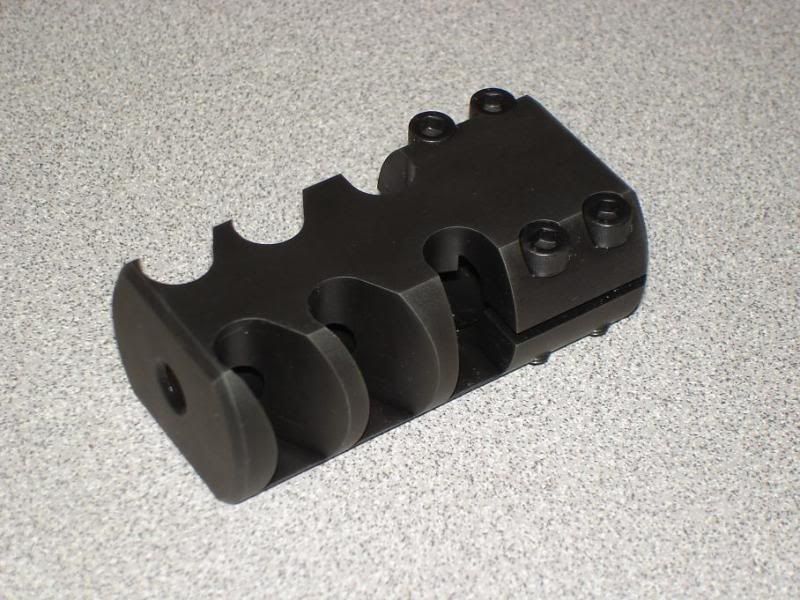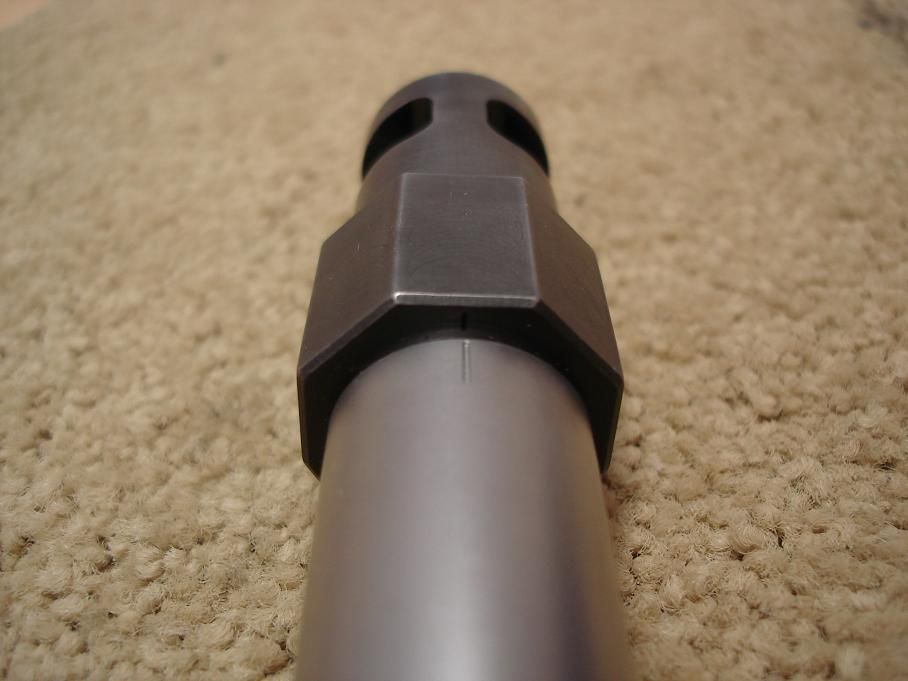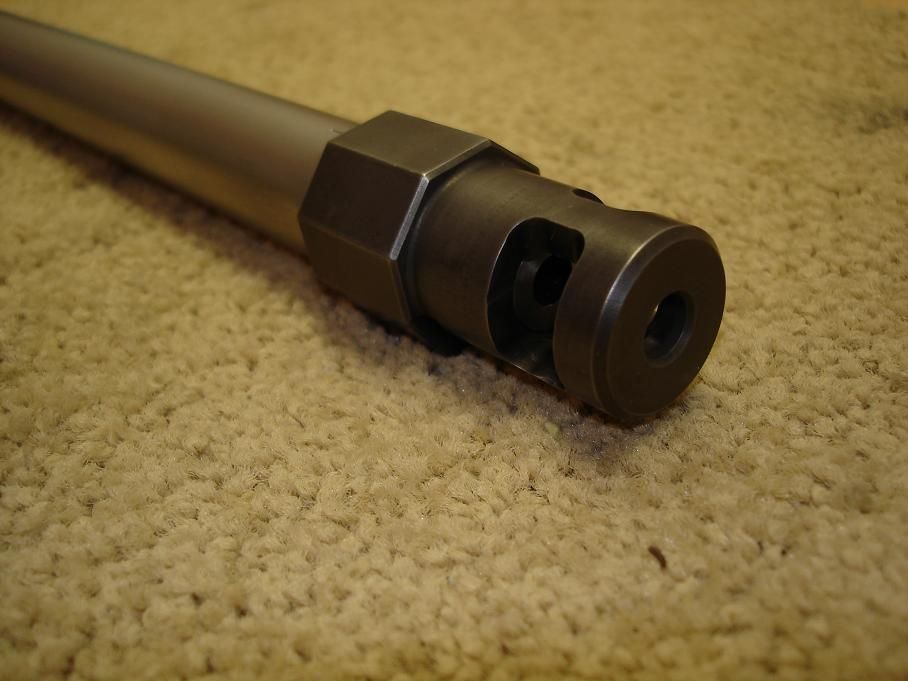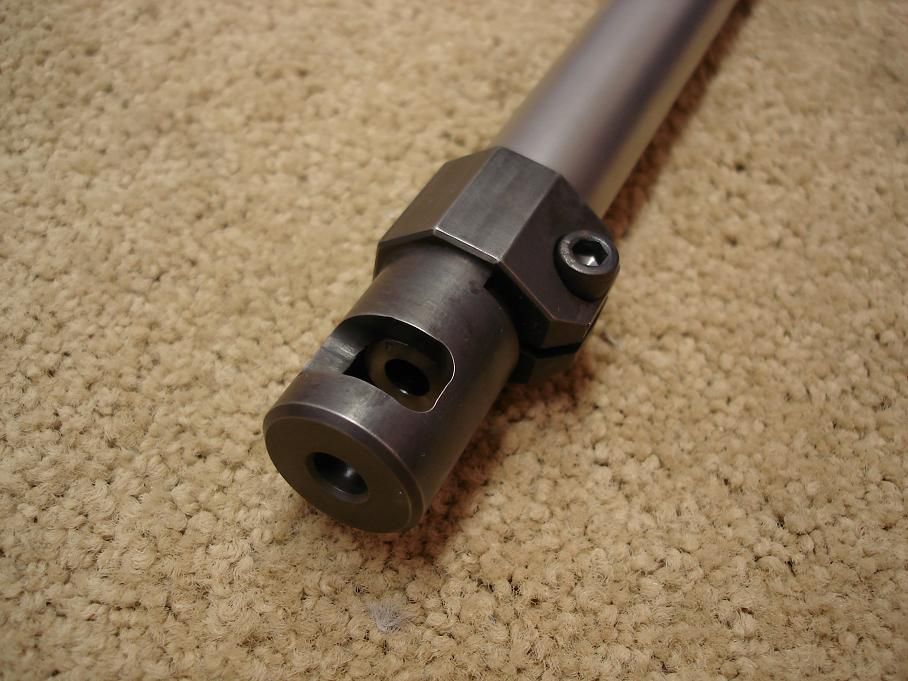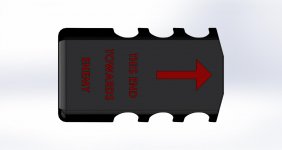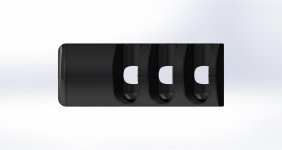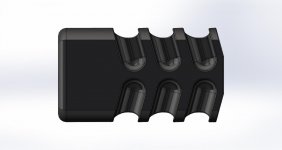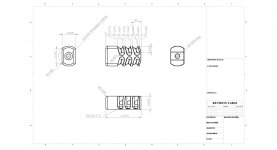Hey folks, what is the best material to use to make a muzzle brake for a .300 Win Mag? I have seen various steels and aluminum used.
The "best" material for a muzzle brake, from an erosion standpoint, would be any 100 series copper alloys. But the cost is stupid and makes it not worth it...
Aluminum works but has 2 issues. First it erodes more readily than copper OR steel. Second aluminum is subject to cracking under repeated stress. It is used in some brakes simply because it is easy to work and in the "pepper pot" (tube full of holes) designs cracking is minimized.
Steel is my first choice and given your design would be what I would recommend. As to alloy... Just about any steel alloy is stronger than MOST aluminum alloys so it does not really matter from a strength stand point if you use 1018, 4140 or 8620... PERSONALLY... I use 4140 pre-hardened for any part that will be seen. The reason for 4140HT is that it takes a nice bluing (I don't know what finish I may want 10 years from now and 4140 leaves my options open) and I find it actually gives a better finish off the mill or lathe than annealed 4140.
Other than the fact that I get a better finish off the mill or lathe, there is NO reason why a brake should need to be hardened steel.
I plan to make it a clamp on style if that makes a difference.
Should make no difference as far as material is concerned... Clamping force should not be a big issue either. Alignment would be the thing I would be concerned with. See below.
Also what should the bore size be for a .300 brake? I've seen .310 to .375 called out.
Normally 0.010" - 0.024" over bore is optimum. Less seems to effect accuracy and more seems to effect both accuracy and efficiency. HOWEVER, the only way to know for sure what is best is to try it.
As for the idea of a clamp on for a brake. Personally I would not try it. Assume you split the difference and go with a 0.016" over bore... That leaves 0.008" on each side of the bullet. Further assume that from the crown of the barrel to the exit of the brake is 3"... A misalignment of more than 9.16 minute of angle (.153°) would result in a collision with the brake. This is a scary small margin of error. Given the design I think it will be VERY hard to make this work. Keep in mind that the top of the brake is going to move more than the bottom of the brake as you tighten the screws. I'm not saying it can't be done. I'm saying that I would not do it.
Way too many variables...
Yup... Trial and more trial... There is no room for errors. Even if the first 6 brakes you try do not work as you hope as long as there is not contact between the brake and the bullet you are still error free!
This is my design.
View attachment 99434
Chuck
Very nice design. I have three thoughts/comments.
First: It is not possible, from the drawing, to determine how wide the area between the ports at the top is. On the brake for my .338 Win Mag I left the web 0.170". I tend to over design things too. If it were me making this brake (and it is not) I would leave the web no less than 1/3 of the bore or 0.103". This is just MY opinion.
Second: I see that the ports are angled rearward. The best efficiency is usually achieved with a 20° - 30° rearward angle. Less than 20° requires wider openings on the ports and a longer overall brake. More than 30° causes turbidity in the gas flow and can not be corrected by altering the port dimensions.
Third: It is not clear from the drawing how the ports intersect the free-bore of the brake at the bottom. I do these cuts with a radiused end mill to intersect the free-bore as close to the web as possible. It should be it should be something like 0.004" - 0.006" off the bottom of the free-bore. Is this important? Frankly I'm not sure... I've always done them this way and it has always worked out for me.
